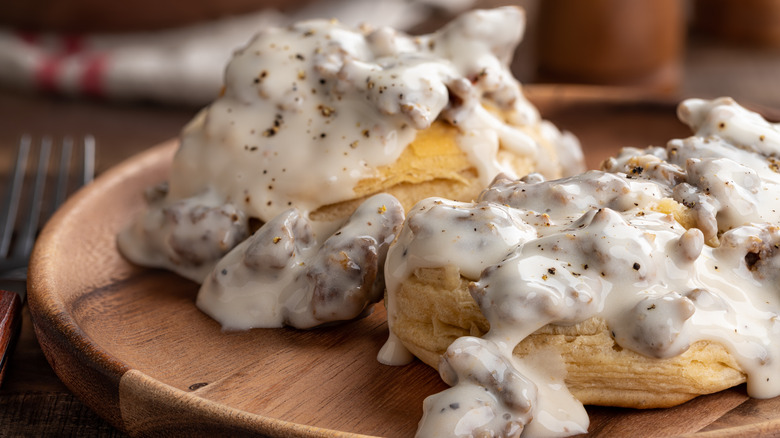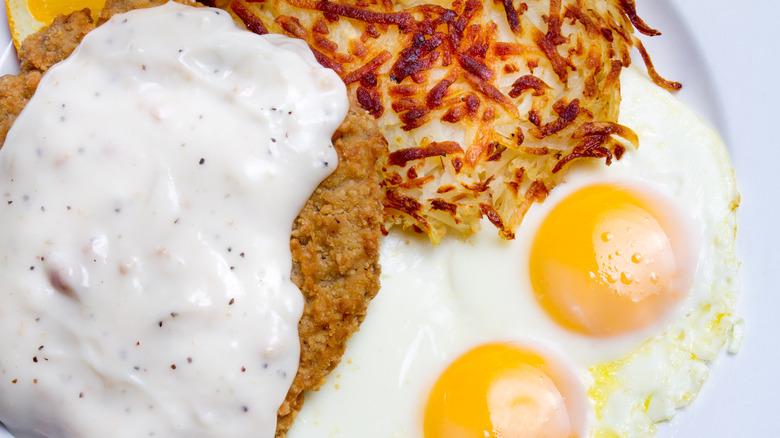Southern Sausage Gravy Used To Have A Different Recipe
Southern cooking is the epitome of comfort food. Fried chicken, peach cobbler, jambalaya, banana pudding, hush puppies, sausage, buttermilk biscuits, and the essential Southern gravy are all dishes we can thank the South for. The special touch that makes them so delicious is a characteristic you can only find done right in certain areas of the country. But believe it or not, even staples, such as sawmill gravy, can change over the years.
Sawmill gravy is that thick, white country gravy that tastes good on just about everything. It is made with pan drippings, to give you the delectable fat content that makes it so satisfying. However, if there is an excess of drippings, the gravy will not be as pure in color. Also, the longer you cook the gravy, the darker it will turn. The original recipe for sawmill gravy called for cornmeal. However, if you order sawmill gravy (or make your own) these days, chances are it will contain flour.
A closer look at the role of cornmeal in country gravy
Cornmeal differs from corn flour and wheat flour in several ways. Although all three are made by grinding corn or wheat grains down into a powdery substance, when making cornmeal, the process is much more aggressive, as the kernels are stripped down to minimize decay. The process also significantly reduces calories, carbohydrates, protein, fats, iron, and more. However, to the average diner, the difference in nutrition is not a factor. It's the texture that stands out.
Sawmill gravy was originally made with a blend of cornmeal, bacon drippings, milk, and seasonings such as pepper. Since cornmeal is gritty, and the dish reportedly originated in logging camps in the South, it is rumored that loggers would say the cooks slipped sawdust into the recipe to give it that distinctive texture.
Although flour has become the accepted ingredient in Southern gravy, if you prefer a little more texture (or you need to stick to a gluten-free diet), cornmeal may be a better option.

